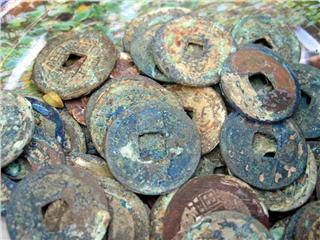Mon, 16 Mar 2015 . Last updated Thu, 25 Jun 2015 09:02









After the house owner prays in the H'mong language, he cuts the chicken‘s throat. And then, he glues its feathers to a new altar. They represent the ancestors and the God of the sun. Hmong people believe that the chicken is the symbol of new day’s sunlight and life. H’Mong people’s altar faces the door. Three incense stick bowls are three bamboo internodes. Another ritual is carried out at the door. It’s not the house owner but another person that is praying. A boy holding two chickens stands by him.
As I’ve been told, this ritual is aimed at inviting the god of the land to join the family in celebrating Tet. H’Mong people believe that there should always be a fire in the kitchen during Tet. If it stops burning, people mustn’t light the fire again by blowing it or the storm might come. Thus, their kitchen is always warm. The chicken is ready to be offered to the ancestors.
Uncle Sang, the house owner, is carrying out the ritual. As I see, only he can offer the food tray. There are five chairs around the tray, possibly the seats for the ancestors. Hmong people’s Tet celebration may be different from those of other ethnic groups. They express both humanistic values and community connection.
On December 30, the whole village is full of the fragrance smell of steamed sticky rice, the ingredient for “banh giay” (round rice cake). In the language of Hmong people, “Pe” or “Dua” means “banh giay”. Grinding the steamed rice is really hard work. Thus, men often take charge of this step. About 10 men take turn to grind it, 2 at a time. They use a wooden pestle with a long handle to grind the steamed rice finely. The more they grind the steamed rice, the more glutinous the cake become. The rice is done when it’s soft and smooth.
To make cakes, people clean the rice and soak in the water during 2 or 3 hours. After that, they let the rice dry and steam it. They used to cook it with a wooden pot and grind it with a wooden mortar which is similar to dug-out canoe. After they finish grinding the steamed rice for one family, these strong men will go to another family to continue their work and this shows Hmong people’s solidarity.
After steamed sticky rice is ground well, women make round cakes. They prepare leaves like phrynium placentarium or banana leaves to wrap their cakes. As for Kinh people, “banh chung” (square sticky rice cake) and “banh giay” (round sticky rice cake) represent the earth and the heaven. But in Mong people’s belief, these cakes symbolize love, faithfulness and the sun. Local people not only offer “banh giay” to guests but also give them some cakes to bring home. These cakes stay sticky and fragrance for a long time. You can grill the cake or fry it with pig oil to make it ready to eat. Together with other traditional dishes, “banh giay” is a tasty dish for anyone who joins Mong people’s Tet celebrations.
When all rituals are finished, people play “khen” (traditional musical instrument of Thai people) and dance hand in hand. They express their love through the melodies music which sounds like birdsong. All of these create a gorgeous picture of the mountainous land.
Source: VTC10 - NETVIET

 Đặt vé máy bay cho người Việt?
Bấm vào đây
Đặt vé máy bay cho người Việt?
Bấm vào đây
Our service uses cookies for technical, analytical and marketing purposes. See our Cookie và Privacy policies for more information. If you agree to this, just keep browsing.


